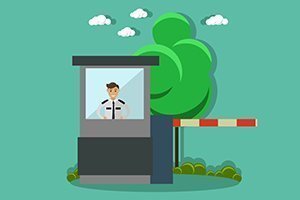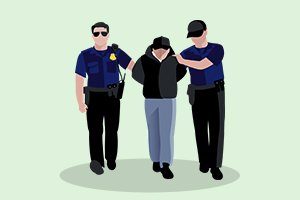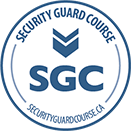What is Kinesics and Why Does it Matter?
Kinesics is the study of body language, and how it influences the perceptions and behaviour of others. This includes facial expressions, gestures, posture, and movements. Given the role that security guards play, a strong understanding of kinesics is critical for being a strong communicator. How a security guard stands, moves and gestures can make the difference between calming a situation or escalating it.
Security guards are often required to interact with people in stressful or confrontational situations. How the guard chooses to communicate, both verbally and non-verbally, has a direct influence on how the subject responds. A security guard who projects authority, while maintaining a calm demeanor can motivate others to also maintain calm and become compliant. While not everyone wants to listen to what you have to say, they will notice the manner in which you present and carry yourself.
How Kinesics Relates to the Security Role
As a security guard, you can use your body language to influence how others respond to you. Your kinesics can:
- Deter potential threats by projecting confidence and authority.
- Encourage cooperation by making people feel safe and respected.
- De-escalate conflicts by reducing tensions and encouraging calm.
- Prevent misunderstandings that could lead to an escalation and confrontation.
Likewise, negative or aggressive body language can escalate things if people feel nervous or frightened by you. They may respond defensively, be uncooperative, or even violent.
How Negative Kinesics Can Cause Escalation
When people feel threatened, the instinctive response is to fight, flee, or freeze. A security guard who is unaware of their body language can trigger these responses in others without even realizing it.
Example:
A security guard notices a customer acting suspiciously in a high theft area of the store. The guard quickly approaches and stands very close to the customer. With his arms crossed, the guard begins glaring at the person.
How would this likely make the customer feel? How would you feel? Likely:
- Threatened: The guard is infringing on their personal space, appears unhappy, and is imposing in posture.
- Defensive: The customer feels like they are being judged or suspected of wrongdoing.
- Angry or Confrontational: In response to feeling threatened and defensive.
Even if they did not intend to make the customer feel this way, the security guard’s kinesics have made the situation worse. Any interaction with this person is likely to be met with resistive and uncooperative behaviour.
Common Negative Kinesics to Avoid
- Standing too close: People we do not know or trust standing too close can trigger our fight, flight, and freeze response due to their ability to harm us.
- Crossing arms: Makes you appear closed off, disinterested, or confrontational.
- Clenching fists: Signals aggressiveness, or being prepared for a physical altercation.
- Pointing fingers: Can be perceived as accusatory.
- Fast or jerky movements: Can startle people into a fight, fight, or freeze response.
How Positive Kinesics Can De-Escalate a Situation
Using the right body language can help keep people calm, by making them feel safe and respected. This leads to increased cooperation.
Example:
A security guard approaches a customer who appears distressed. Rather than approaching aggressively as in the previous example, the guard:
- Approaches calmly and maintains an open (or neutral) stance.
- Stands a reasonable distance away from the customer (4-6 feet).
- Keeps their hands visible and open (rather than clenched).
- Maintains a non-threatening tone of voice when speaking.
How would this likely make the customer feel? How would you feel? Likely:
- Respected: The security guard does not appear challenging or aggressive.
- Safe: There is no indication of an immediate threat.
- More willing to cooperate: Since there is no need for a defensive response, the customer is more willing to listen and cooperate with the security guard.
Positive Kinesics to Use
- Relaxed Posture: This projects confidence without arrogance.
- Open Hands: Indicates good intentions and a willingness to listen.
- Slow, Smooth Movements: Demonstrates calm, and avoids startling the customer.
- Neutral Facial Expressions (and smiling when appropriate): Shows care and concern for the other person, as well as the calm emotional state of the guard.
- Steady Eye Contact: Shows presence and engagement, in a way that is not intimidating.
Beyond Kinesics: Other Verbal and Non-Verbal Cues
While body language is critical to good communication, there are other verbal, and non-verbal cues that play a role in influencing behaviour.
Proxemics (Use of Space)
- Give people enough space so that they do not feel threatened by you.
- Every one, and every situation is different, but on average try to maintain a distance of approximately 6 feet. This is safer for you as well!
- Avoid standing directly in front of the person. Doing so can make them feel like their ability to escape is being blocked. Again, it is safer for you too.
Paraverbals (Tone, Volume and Cadence)
- Maintain a calm tone, avoiding any inflections of anger, frustration, or annoyance.
- Speak at an appropriate volume for the situation. Speak louder if distance or noise is a barrier. Speak more quietly in low noise or close quarter settings.
- Do not speak too fast or slow, as this can be distracting and make it harder to follow along.
Mirroring (Subtle Imitation)
Naturally mirroring some else’s body language can help to build rapport and make them feel at ease. This can also be used to influence their behaviour. For example, if the person is tense, first mirroring their body language and then relaxing yours may encourage them to relax as well.
Dos and Don’ts of Using Kinesics in Security Work
✅ Do:
✔️ Maintain a neutral, confident posture (Interview Stance)
✔️ Keep your hands visible, open, and above your waist.
✔️ Move slowly and deliberately, especially in tense situations.
✔️ Maintain eye contact, without glaring.
✔️ Maintain a safe distance, respecting the person’s personal space.
✔️ Speak calmly and confidently.
❌ Don’t:
✖️ Invade people’s personal space.
✖️ Cross your arms.
✖️ Clench your fists.
✖️ Make sudden, jerky movements.
✖️ Point fingers at people.
✖️ Stare or glare at people.
✖️ Raise your voice unnecessarily.
Conclusion
As a security guard, how you are perceived by others is just as important as what you say to them. By utilizing positive kinesics and avoiding negative ones, you can influence behaviour, gain cooperation, and prevent conflicts from escalating.
While sometimes referred to as a “soft skill”, controlling your body language is a critical communication tool that can keep you, and everyone around you safe.
Understanding kinesics, and how to use it to your advantage can help you to handle even the most challenging situations. If you’d like to learn more about this concept, along with other critical security skills, please visit SecurityGuardCourse.ca and check out our training courses.
References
Commonwealth of Kentucky. (n.d.). Using verbal de-escalation. Retrieved from https://extranet.personnel.ky.gov/KEAP/Verbal%20De-Escalation%20Skills%20Presentation.pdf
Cybersecurity and Infrastructure Security Agency. (2021). De-escalation. Retrieved from https://www.cisa.gov/sites/default/files/2022-11/De-Escalation_Final%20508%20%2809.21.21%29.pdf
Defuse. (2024). De-escalation techniques: 4 effective strategies for all industries. Retrieved from https://deescalation-training.com/2024/05/de-escalation-techniques/








